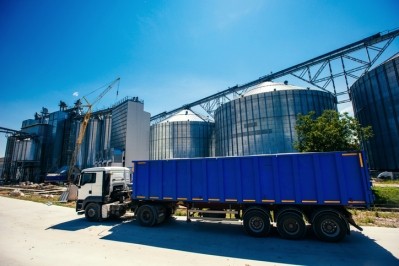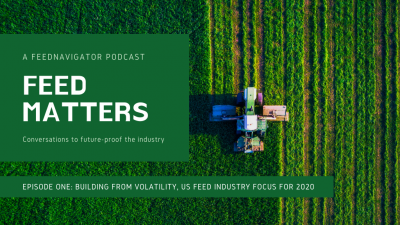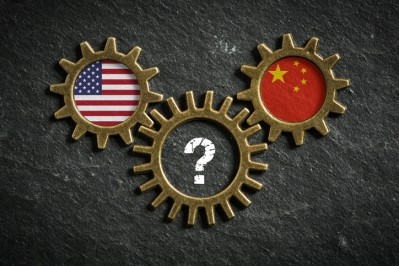How will access to new markets impact US feed sector?

In terms of total exports, the US sends more products to the EU, he said. However, looking at the role of feed ingredients and agricultural markets, the top markets for the US in 2017 were China, Mexico and Canada.
Those three countries accounted for about 45% of the US’s agricultural exports, he told us. “In 2017, the EU bought about $11bn compared to $18.6bn to Mexico and $19.5bn to China,” he added.
“The key takeaway [from] the China end of the [trade] spectrum and the EU end of the spectrum – they’re almost opposite ends of the story in how they’ll play out in respect to agriculture,” he said.
A seat at the table
Members of several feed and producer organizations have been asking for agriculture to be a part of the potential trade talks between the US and the EU since they were initially announced in July.
The ongoing discussion about trade negotiation follows the previous Transatlantic Trade and Investment Partnership (TTIP) efforts, which failed to move forward during President Obama’s tenure in office and also saw a stumbling block in agriculture.
Members of American Soybean Association have been asking for agriculture to be part of the negotiations and said they were “disappointed” by the vote from members of the European Union to move forward with trade talks that exclude agriculture.
The EU remains an important market for US agricultural exports, said the American Soybean Association (ASA). However, the move makes it harder to address some of the agriculture-related non-tariff barriers that exist.
The organization has not been alone in calling for agriculture to be part of those talks and both the National Grain and Feed Association (NGFA) and North American Export Grain Association (NAEGA) have stressed the need for discussion to address access for agricultural products.
However, agriculture remains a “smaller player” in terms of what is exported there, said Widmar.
“What it is Important for agriculture to keep in mind there is, the size of the export market is different, agriculture’s role in the export market is different and even the things that agriculture sends to the EU vs China are different,” he said. “Farm-level chatter is different – the EU is not buying as many shiploads of grain as what China would be.”
However, Widmar said both markets matter.
“On the other side of this every bushel or ton that we don’t export is on the balance sheet and translates into higher ending stocks, lower prices and producers are struggling with what do I plant the next year,” he said. “Every bushel we can export is an important bushel – it’s just important to recognize [that] it’s a different market and we think about it in a lot of different ways.”
Slice of ‘pie’
Looking at opportunities for trade growth with the EU the focus might be more on “consumer-oriented outputs” or indirect feed trade through products like meat exports, said Widmar.
“It’s all important, but it’s a different set of negotiations or a different set of opportunities,” he added.
Considering both markets as pie charts the question is how much space can feed or feed crop exports gain, he said.
“The goal from the trade negotiation would be ten years from now how big is the US ag trade with the EU? The goal would be to have the slice be bigger – maybe more access or be a little more competitively priced in these markets,” he said. “But the size of the pie doesn’t change much – Europe is a mature economy, it’s growing more slowly [and] it’s an older demographic … that pie chart isn’t one of growth it’s more a reallocation and a balancing of the pie chart.”
The market, or pie chart, for China is changing much faster, Widmar said. The economy is growing at about 7% or 8% annually and in 10 years the anticipation is that it will present a “larger pie.”
“This is another element of what’s different between these trade negotiations – for the China story there’s a win-win story when the pie graph gets bigger even the same slice is a bigger [piece],” he said. “In the European story, it’s more of a rebalancing.”
Trade deal considerations with China
Although China has the potential to be the larger market for feed and feed ingredient exports from the US, the ongoing trade discussions also present areas for consideration, said Widmar.
Remaining questions include when tariffs on US soybeans would be removed and how long the discussion process will take, he said.
“There’s a lot of talk about growth and opportunities for agricultural products with China,” he said. “We’re hearing $30bn in additional purchases or 2-3 times growth and it’s all interesting and great but we have to sort of check that number – agricultural exports to China have been between $20-25bn pre-trade war and then those numbers dropped to $9bn last year.”
“The question that’s really relevant is what’s the base rate where are we increasing that from?” Widmar added. Would the potential expansion to the trade market start from $9bn or $20bn?
If trade restarted from the $9bn level then it would take about $10bn in sales to return to the previous market, he said.
The time involved in the market expansion also is a consideration as China has been growing at an “impressive rate” when considered over a multi-year time frame, he said.
“If you say $9bn is a starting point and they have to grow that $30bn over 10 years – it takes $10bn to get out of the hole and [then to] talk about doubling over 10 years … would be slower growth rate than what we would have seen.”
“The magnitude of the trade deal; how long it’s going to take; how China is going to use carrots or sticks to make it happen on the ag side; and how is it going to get policed – those are the four big buckets that are going to come up.













